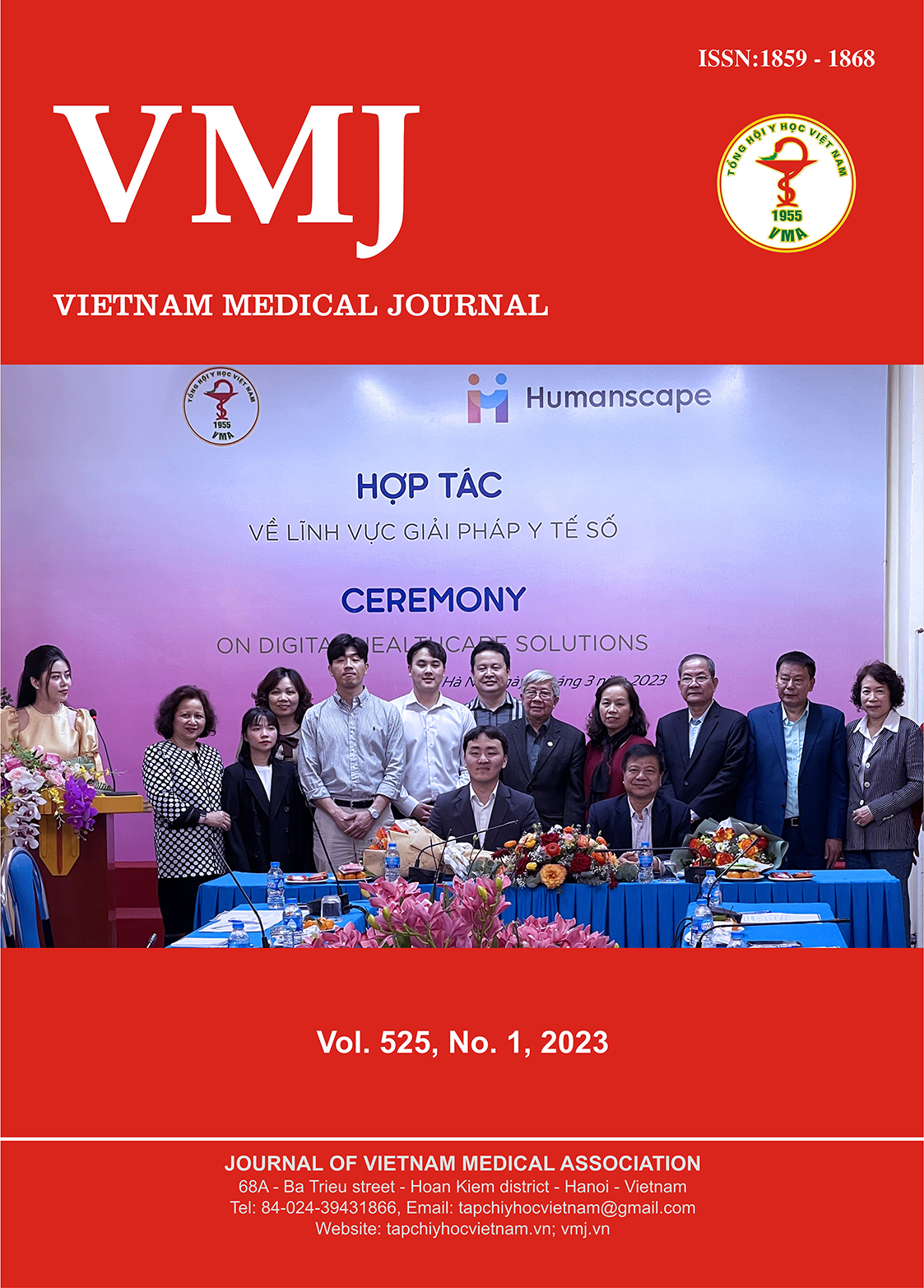THE CIRCADIAN PATTERN OF 24-HOUR AMBULATORY BLOOD PRESSURE AND HEART RATE IN THE CEREBRAL INFRACTION PATIENTS WITH HYPERTENSION AND HYPERTENSIVES PATIENTS
Nội dung chính của bài viết
Tóm tắt
Aims: Evaluation of the circadian rhythm of 24-hour ambulatory blood pressure and pulse rate in the cerebral infraction patients with hypertension and hypertensives patients with purpose prognostic, prevention and treatment in two group.
Objects and methods: This study included 140 cerebral infarction patients with hypertension, hospitalized for the first 7 days (mean age 65.5±10.4 years) and 143 primary hypertensive patients (mean age of 64.4±7.5 years). All had 24-h ambulatory recording, with measurement 30 every minutes in the daytime (6.00 am - 10.00 pm) and every 60 minutes at night (10.00 pm - 6.00 am). Results: Blood pressure in patients with cerebral infarction oscillated significantly more than in hypertensive patients; mean standard deviation of systolic blood pressure (25.8 mmHg) and diastolic blood pressure (15.8 mmHg) in patients with cerebral infarction respectively was significantly higher than those with hypertension (20 mmHg and 12.1 mmHg) with p <0.01. The rate of non-dipping blood pressure at night, the overload of systolic and diastolic blood pressure, morning surge blood pressure in patients with cerebral infarction was significantly higher than that of hypertensive patients (92.1; 75.5; 60.2; 57.8 versus 64.3; 60.1; 49.1; 36.3 respectively; p <0.01). Conclusion: It is necessary to monitor 24-hours ambulatory blood pressure in hypertensive patients and patients with cerebral infarction in the first week of admission to identify some phenomena such as nocturnal non-dipping blood pressure, the overload of blood pressure, especially morning surge blood pressure early to plan for prevention of target organ damage, particularly cerebral stroke in hypertensive patients.
Chi tiết bài viết
Từ khóa
24-hour ABPM, Circadian pattern, Cerebral infarction, Arterial hypertension
Tài liệu tham khảo
2. Eoin O' Brien, Ambulatory Blood Pressure Monitoring: 24-h blood pressure control as a therapeutic goal for improving cardiovascular prognosis.Medicographia. 2010; 32, 3:241-249.
3. Norm Campbell et al. Canadian Hypertension Education Program recommendations, An annual update, Canadian Family Physician- Le Medecin de famillecanadien, 2010: 649-653.
4. Abanti Chaudhuri et al. Role of Twenty-Four- Hour Ambulatory Blood Pressure Monitoring in Children on Dialysis, Clin J Am SocNephrol. 2011: 1-7.
5. Gupta. A, H. Shetty (2005) Circadian Variation in Stroke a Prospective Hospital-Based Study, Int J ClinPract. 2005;59(11):1272-1275.
6. Hatem Farhan, Mona Al-Hasani, Mohamed Misbah, and Mansour Sallam. Comparative Study of Ambulatory Blood Pressure Monitoring and Clinic Blood Pressure Measurement in the Risk Assessment and Management of Hypertension. Sultan QaboosUniv Med J. 2010; 10(3): 370-376.
7. Hiroshi Ijiriet al. Cardiacarrhythmias and Left Ventricular Hypertrophy in Dipper and Non-dipper Patient With Essential Hypertension.Japanese Circulation Journal.2000; 64: 499-504.
8. Iqbal. P and Louise Stevension. Cardiovascular Outcomes in patients with normal and abnormal 24-hour ambulatory blood pressure monitoring.International Journal of Hypertension. 2011.4 pages.
9. Kario K. Caution for Winter Morning Surge in Blood Pressure: A Possible Link With Cardiovascular Risk in the Elderly.Hypertension; 2006;47:139-140.
10. KazuomiKario, Morning Surge in Blood Pressure and Cardiovascular Risk: Evidence and Perspectives. Hypertension. 2010; 56:765-773.
11. Madin. K, P. Iqbal. Twenty-four-hour ambulatory blood pressure monitoring: a new tool for determining cardiovascular prognosis.The Fellowship of Postgraduate Medicine; 2006;82:548-551.
12. Josep Redon. The importance of 24-hour ambulatory blood pressure monitoring in patients at risk of cardiovascular events. High Blood Press Cardiovasc Prev. 2013;20(1):13-8. DOI: 10.1007/s40292-013-0006-3.
13. Thomas Truelsenet al. Global burden of cerebrovascular disease.Cerebrovascular diseases. 2000:1-67.
14. Niels Gobin et al. (2012), Mesureambulatoire de la pressionartérielle sur 24 heures, Forum Medical Suisse.2012; 12. (31-32):600-607.


